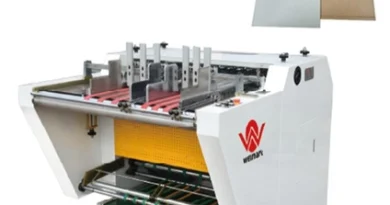Transforming Material Fabrication: The Evolution and Impact of Modern Grooving Machinery in Industrial Applications
Grooving machinery is essential in various industrial applications, particularly in the manufacturing of components where precision grooves are critical for assembly or functionality. These machines are used extensively in sectors such as automotive, aerospace, and manufacturing to create precise, uniform grooves in materials ranging from metal to plastic and composites. This article explores the latest technological advancements in grooving machinery and their significant impact on the efficiency and quality of industrial fabrication.
Technological Advancements in Grooving Machinery
- CNC Technology: Modern grooving machines incorporate computer numerical control (CNC) technology, which allows for high precision and automation. CNC grooving machines can produce complex patterns and shapes with exact tolerances, minimizing human error and enhancing production consistency.
- High-Speed Machining: Recent developments include the integration of high-speed machining capabilities, which significantly reduce processing times. These machines can operate at higher speeds without compromising the quality of the grooves, thereby increasing overall productivity.
- Advanced Material Compatibility: Today’s grooving machinery is designed to handle a diverse range of materials. Innovations in cutting tool materials and coatings have extended the machinery’s capability to work with harder and more abrasive materials, which is particularly beneficial in industries like aerospace and automotive manufacturing.
- Automation and Robotics: Integration of robotics in grooving machines has led to improvements in the handling and positioning of workpieces, which is critical for achieving precise grooving on complex components. Automated loading and unloading systems further enhance the efficiency of the production process.
- Real-Time Monitoring and IoT: The incorporation of real-time monitoring systems and the Internet of Things (IoT) connectivity allows for better control and optimization of the grooving process. These technologies provide immediate feedback and data analysis, helping to prevent defects and reduce downtime.
Impact on the Industrial Sector
The advancements in grooving machinery technology have several significant impacts on the industrial sector:
- Enhanced Productivity: Automation and high-speed machining capabilities allow for faster production rates, which can meet the increasing demands of industries for quicker turnaround times.
- Superior Quality Control: The precision offered by CNC technology and real-time monitoring ensures high-quality grooves that meet stringent industry standards, leading to improved reliability and performance of manufactured products.
- Operational Efficiency: With advanced material compatibility and automated systems, manufacturers can reduce waste and energy consumption, leading to more sustainable production practices.
- Flexibility in Manufacturing: The ability to quickly adjust machine settings for different materials and designs allows for greater flexibility in product development and customization.
Future Trends
The future of grooving machinery is likely to see further integration of AI and machine learning for predictive maintenance and optimization of machining processes. Additionally, advancements in tooling materials and techniques could open new possibilities for working with ultra-hard or novel materials, expanding the scope of applications for grooving machinery.
Conclusion
As grooving machinery continues to evolve with technological innovations, its role in enhancing the capabilities and efficiency of the industrial sector becomes increasingly vital. These machines are not only transforming the way materials are fabricated but also setting new standards for precision and efficiency in industrial manufacturing.



